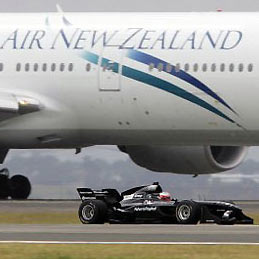It’s almost 10 years since the Concorde disaster, so we can expect a lot of press releases from the FOD detection vendors over the next few weeks. QinetiQ appear to be the first with a general article on Tarsier at airport-business.com.
Here’s a snippet:
Two of the most dramatic aviation incidents in recent years have highlighted the dangers posed to airlines by bird strikes and runway debris. The Concorde tragedy of 2000 in which 113 passengers were killed, was caused by a titanium strip, no larger than a school ruler, which lay undetected on the runway. This strip burst Concorde’s rear tyres, fragments of which subsequently punctured the aircraft’s fuel tank causing a catastrophic explosion.
You can read the full article here.











